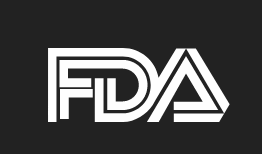What to Consider When Purchasing a Nitrogen Generator.
 Companies thinking about purchasing a Nitrogen generator should consider what purity of Nitrogen they need. Nitrogen purity is usually expressed in the form of a percent. For example, 99 percent Nitrogen means the gas consists of 1 percent Oxygen, with the remaining 99 percent consisting of Nitrogen and other inert gases.
Companies thinking about purchasing a Nitrogen generator should consider what purity of Nitrogen they need. Nitrogen purity is usually expressed in the form of a percent. For example, 99 percent Nitrogen means the gas consists of 1 percent Oxygen, with the remaining 99 percent consisting of Nitrogen and other inert gases.
However, some high purity cases express the Nitrogen’s purity as parts per million by volume (PPMv) of Oxygen that remains in the product gas. Ten PPMv is equal to 99.999 percent Nitrogen and 10,000 PPMv equals 1 percent Oxygen. Determining the minimum purity level required for the applications at your facility is essential to ensure that you benefit the most from your on-site Nitrogen production. Our Nitrogen generators usually pay for themselves in less than 18 months.
On-Site Gas’ Self-Generated Nitrogen Gas Production Options: Pressure Swing Adsorption and Membrane Nitrogen Generators.
Pressure Swing Adsorption Nitrogen Generators
Pressure Swing Adsorption, which is commonly referred to as PSA, uses two vessels. These vessels are filled with CMS (carbon molecular sieve). While compressed air flows up through one vessel, the Oxygen is adsorbed, meanwhile the other vessel de-pressurizes some of the Nitrogen, which flows downward to desorb (drive-off) the moisture and Oxygen the first vessel previously collected. This process continues with one vessel performing adsorption and the other performing desorption. A full cycle includes several steps and usually only takes about two minutes.
Membrane Nitrogen Generator System
A membrane Nitrogen generating system uses hollow fibers of various lengths, materials, efficiencies and diameters. These hollow fibers consist of man-made polymers: their variances allow for selective permeation. Selective permeation is used to separate the gases from the stream of compressed air as it moves through the membranes.
Some vessels contain millions of hollow fibers. These vessels may be referred to as membranes or membrane bundles. In order to provide the capacity needed, these membranes are frequently installed parallel to one another. Semi-permeable fibers are designed to let the faster gases permeate the fiber walls and release into the surrounding atmosphere. These gases are carbon dioxide, Oxygen, water vapor and hydrogen. The membrane separation process does not involve the use of moving parts, which is beneficial for individuals who would like to avoid maintenance and keep things simple; however, other parts of a membrane Nitrogen generator do have moving parts and electrical components. Membrane Nitrogen generators are typically quiet and take up less space that their pressure swing adsorption counterparts do.
Nitrogen Generator Energy Costs
Energy costs are determined by the percentage of Nitrogen required: An N2 system that provides 95 percent purity takes approximately 2 standard cubic feet per minute of compressed air to provide 1 standard cubic feet per minute of Nitrogen.
Nitrogen Specs for Comparison Purposes
- Food Packaging – about 99.5 percent for the majority of applications
- Blanketing to avert hazardous conditions – anywhere from 95 to 97 percent.
- Heat treating metals – materials and processes determine whether purity levels can be 97 percent or as high as 99.999 percent (10 parts per million of O2).
- Blanketing vegetable oils (edible) – approximately 99.9 percent.
- Printed Circuit Boards – “Lead Free” selective solder in most cases requires 99.999% (10 parts per million of O2). Both wave solder and reflow can require purities between 99.9% and 99.99%.
On Site Gas provides PSA Nitrogen gas generators and membrane Nitrogen gas generators to companies all over the world. Our generators are ideal for any company that uses Nitrogen. Furthermore, our generators can be found in some of the most remote places on Earth, even those with the harshest climates. To learn more, contact us today.






